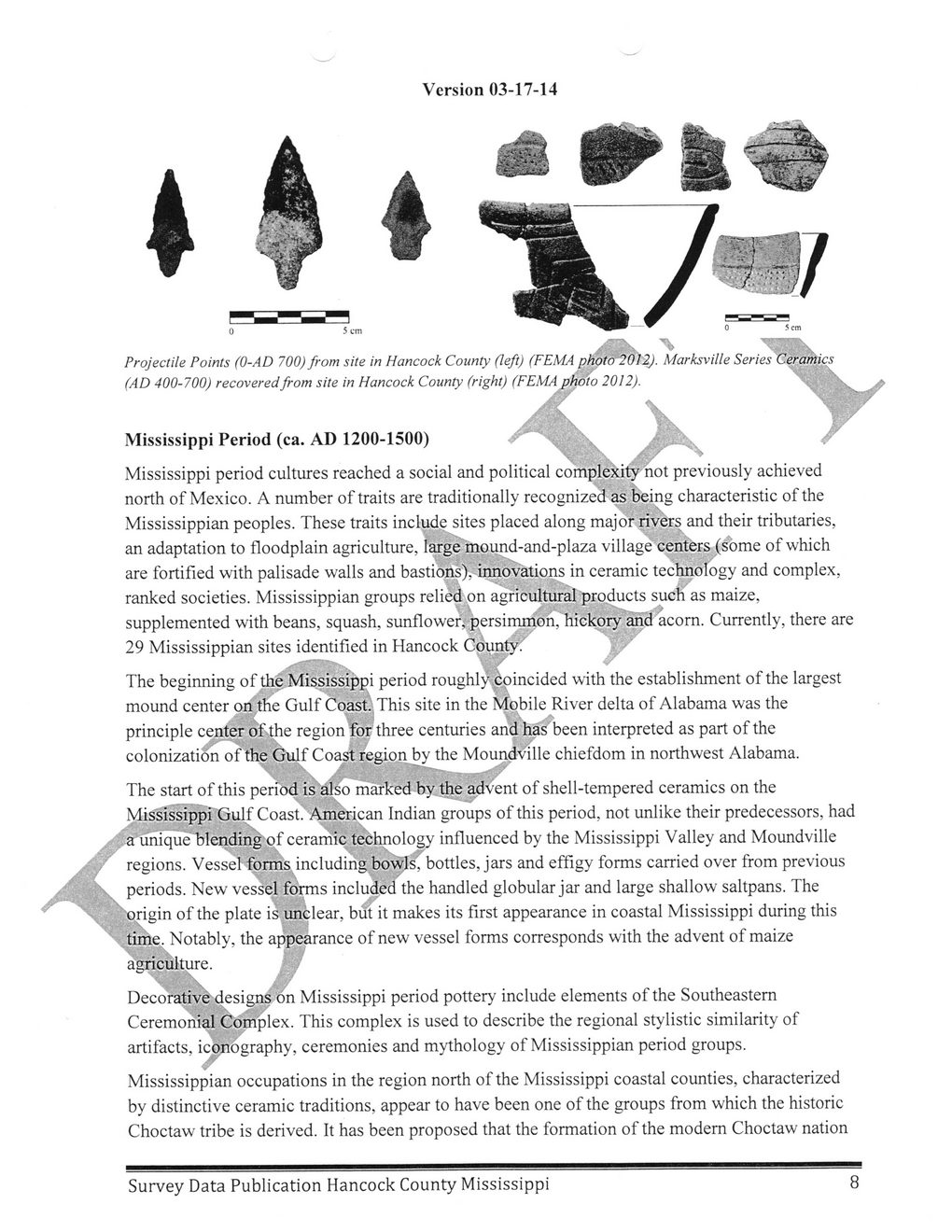This text was obtained via automated optical character recognition.
It has not been edited and may therefore contain several errors.
Version 03-17-14 Projectile Points (0-AD 700) from site in Hancock County (left) (FEMA phot0^2012). Marksville Series C$r(nhics (AD 400-700) recovered from site in Hancock County (right) (FEMA photo 2012). X. ,j> ' \ \ v;/ Mississippi Period (ca. AD 1200-1500) :\ \ / _N Mississippi period cultures reached a social and political complexity-hot previously achieved north of Mexico. A number of traits are traditionally recognized as being characteristic of the Mississippian peoples. These traits include sites placed along major rivers and their tributaries, an adaptation to floodplain agriculture, large mound-and-plaza village centers (some of which are fortified with palisade walls and bastions),'innovations in ceramic technology and complex, ranked societies. Mississippian groups relied on agricultural products such as maize, supplemented with beans, squash, sunflower, persimmon, hickory and acorn. Currently, there are 29 Mississippian sites identified in Hancock County. The beginning of the Mississippi period roughly coincided with the establishment of the largest mound center on the Gulf Coast. This site in the Mobile River delta of Alabama was the principle center of the region for three centuries and has been interpreted as part of the colonization of the Gulf Coast region by the Moundville chiefdom in northwest Alabama. The start of this period is also marked by the advent of shell-tempered ceramics on the Mississippi Gulf Coast. American Indian groups of this period, not unlike their predecessors, had a unique blending of ceramic technology influenced by the Mississippi Valley and Moundville regions. Vessel forms including bowls', bottles, jars and effigy forms carried over from previous periods. New vessel forms included the handled globular jar and large shallow saltpans. The origin of the plate is unclear, but it makes its first appearance in coastal Mississippi during this time. Notably, the appearance of new vessel forms corresponds with the advent of maize agriculture. Decorative designs on Mississippi period pottery include elements of the Southeastern Ceremonial Complex. This complex is used to describe the regional stylistic similarity of artifacts, iconography, ceremonies and mythology of Mississippian period groups. Mississippian occupations in the region north of the Mississippi coastal counties, characterized by distinctive ceramic traditions, appear to have been one of the groups from which the historic Choctaw tribe is derived. It has been proposed that the formation of the modem Choctaw nation Survey Data Publication Hancock County Mississippi 8

Hancock County History and Archeology Survey-Publication-Data-2014-(10)